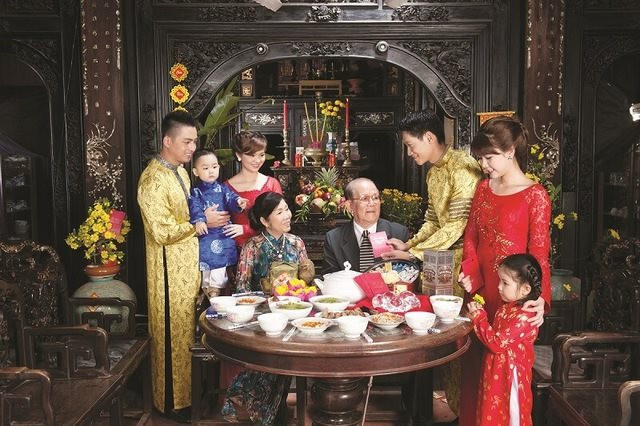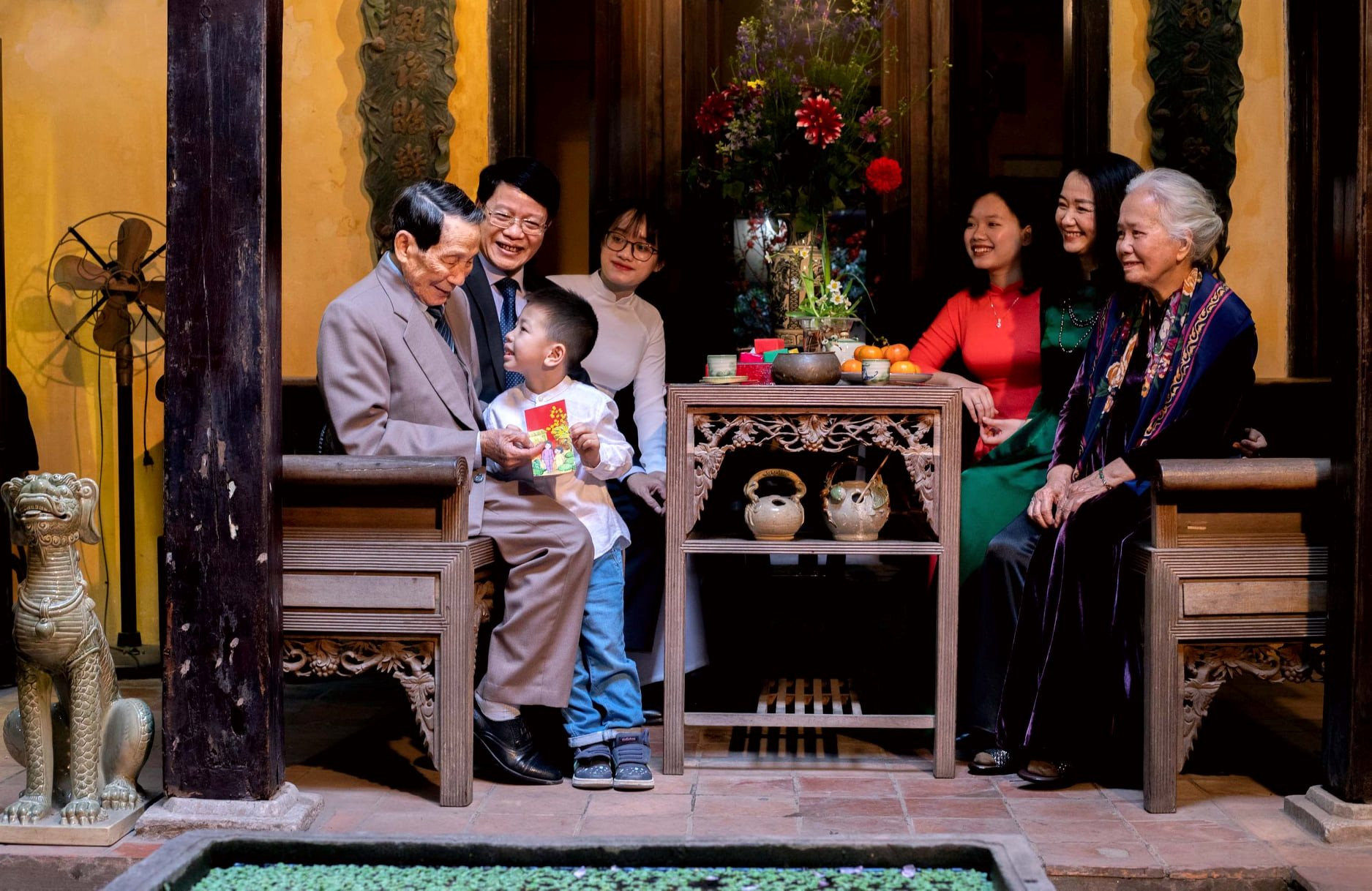Giving lucky money is a beautiful traditional cultural feature in Vietnam in general, Hai Duong in particular at the beginning of each new year, for children to express their respect to their elders, and it is also an occasion for adults to show their love for children, sending messages to children to be good and study well...

The custom of giving lucky money at the beginning of spring is believed to have originated in China, but has been associated with the traditional Vietnamese New Year from ancient times to the present. From the moment of New Year's Eve, after the offering tray is presented, incense begins to be lit on the family altar, grandparents and parents begin to give lucky money to their children and grandchildren. At the beginning of the 20th century, writer and journalist Phan Ke Binh wrote in the book Vietnamese Customs: "After offering to the ancestors, children and grandchildren give lucky money to their grandparents and parents, bowing twice."
Like the whole country, today the custom of giving lucky money in Hai Duong has become less complicated, children and grandchildren no longer bow to their grandparents and parents, but the good meaning that the custom of giving lucky money wants to convey is still intact. The whole family of many generations gathers in a warm room on the first day of the new year, children and grandchildren politely fold their hands to receive red envelopes as bright as peach blossoms, along with wishes to be good and studious, pass exams, respect the elderly, and love children. The elderly also receive from their children and grandchildren envelopes that were prepared before Tet with wishes for longevity and intelligence to be a support for the extended family...
In the past, lucky money envelopes had few designs, not many in number and were all red. In painting, red is a warm color, also a color symbolizing prosperity, luck, suitable to appear at the beginning of the new year. Nowadays, lucky money envelopes are mass-printed with many colors, designs and the nature of lucky money at the beginning of spring has also changed a lot compared to before, especially the amount of lucky money.
"Grandparents and parents give their children and grandchildren a few cents or a few dimes each, called lucky money. Guests who come to visit to wish them a happy new year also receive lucky money from the host, or vice versa," writer and journalist Phan Ke Binh continued in the book Vietnamese Customs. Thus, the beauty and meaning of the custom of giving lucky money does not lie in the amount of money inside the envelope, but in other profound implications, which are the wishes for each other to have good health, a prosperous business, good crops, and the elimination of diseases...

My friend has been living with his family in Europe since he was a child. For the past ten years, he has enjoyed returning to his hometown to celebrate the traditional New Year, and giving lucky money is one of the customs he enjoys the most, especially after I explained it in detail. However, last year, he told me about his fear of giving lucky money. When he first entered a family to wish them a happy new year, the mother laughed loudly and said to the children:
- These guys have made a big buck. With lucky money from overseas Vietnamese, they can buy as many toys as they want!
After my friend gave lucky money to the children, the landlady innocently said:
- Oh, so you don't get lucky money? Ha ha!
When her children stood right in front of the adults opening the envelope, one of them immediately said:
- Only twenty thousand, I thought so!
The conversation on Tet holiday between my friend and the homeowner suddenly became awkward.
Or the story of many adults now collecting lucky money from their children every day, sitting and counting it in front of the children, making them imagine themselves as "tools", receiving lucky money envelopes is like "working economically" for their mothers. Then the story of many innocent children asking each other "how much lucky money did they receive today", also shows that many children today are not thoroughly instructed about the good humanistic meaning of the custom of giving lucky money at the beginning of spring, but pay more attention to the amount of lucky money.
Moreover, the beautiful custom of giving lucky money at the beginning of the new year to some people is also like an occasion to "repay" or show off. For example, there are men who are not well off financially, but when Tet comes, they receive a bundle of money as "mass" lucky money, while their wife and children may be miserable at home. The beautiful meaning of the custom of giving lucky money at the beginning of the new year just passes away with each Tet...
The custom of giving lucky money does not have any material value. According to the elders, in the past, just giving lucky money was good enough, children did not ask for it, adults did not ask for it, especially the amount of money was not important. After Tet, children opened the lucky money envelopes and put them in piggy banks to save or buy toys after getting their parents' consent. Thus, the custom of giving lucky money multiplies its meaning in the beginning of spring and the new year!
TIEN HUY